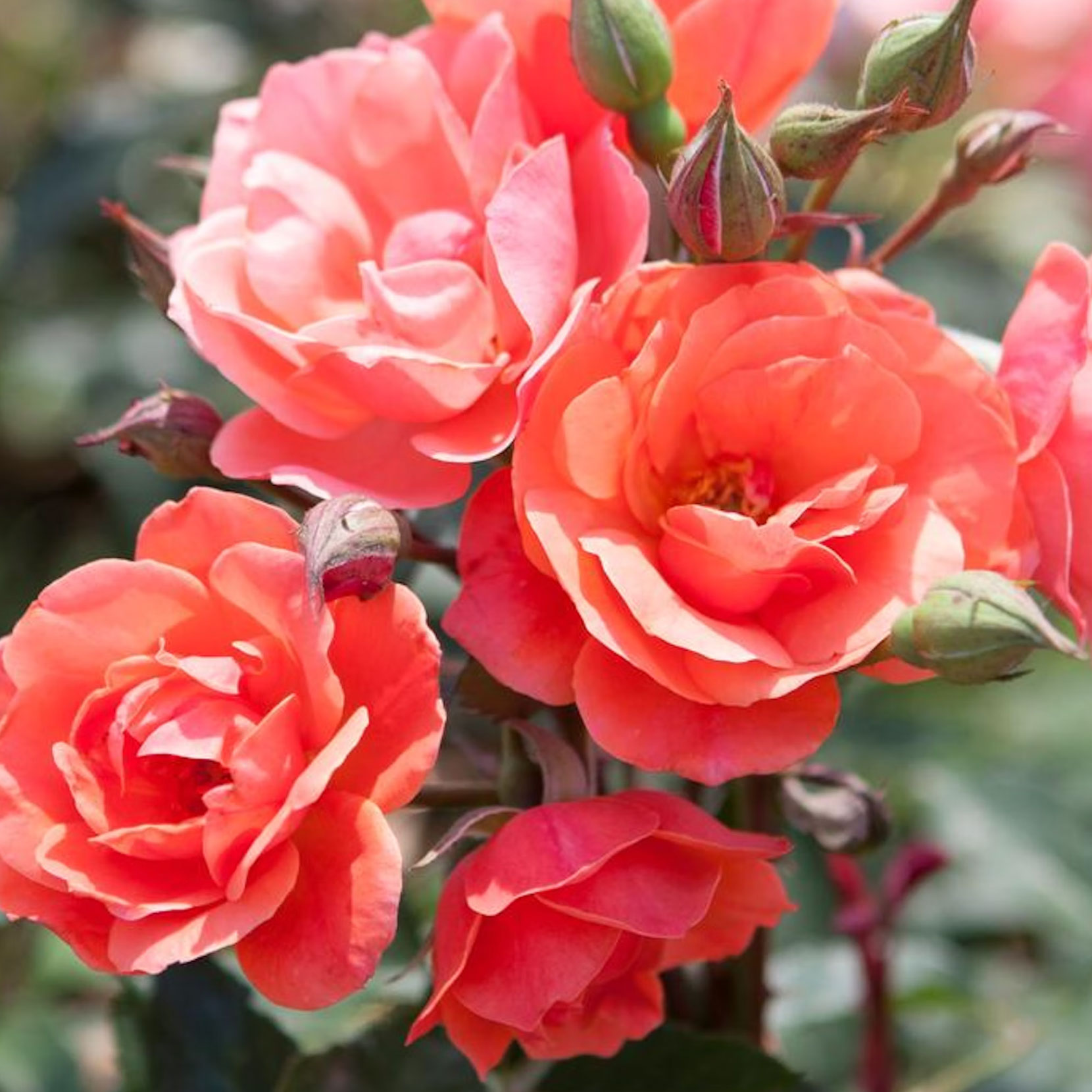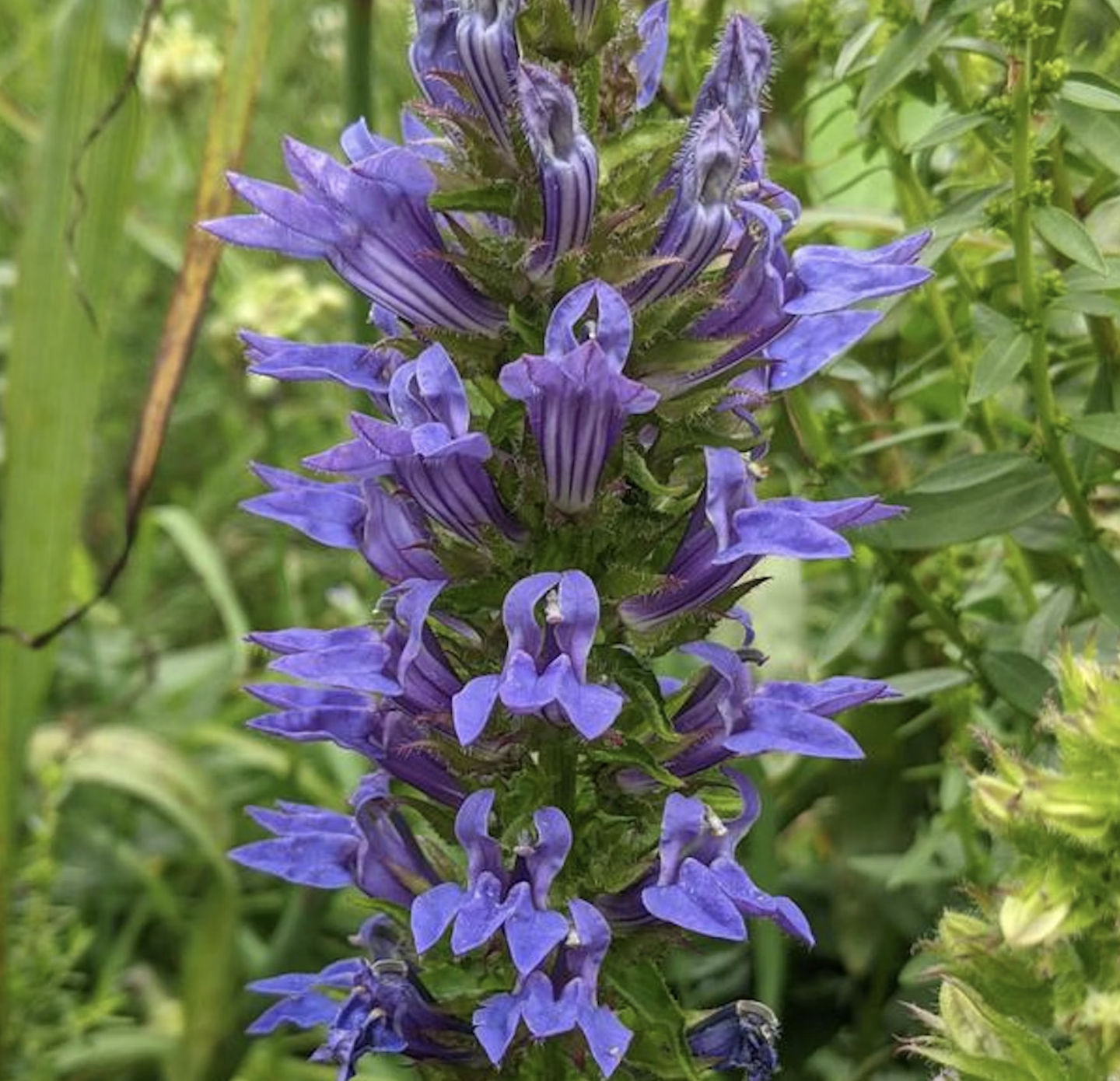Unexpected Plant Color Combinations – Try These 4 Unusual Color Pairings To Rejuvenate Your Garden Design
Certain combinations of color can transform an everyday planting idea into a visual feast. Here are 4 unexpected plant color combinations to shake up your landscape

Amy Draiss
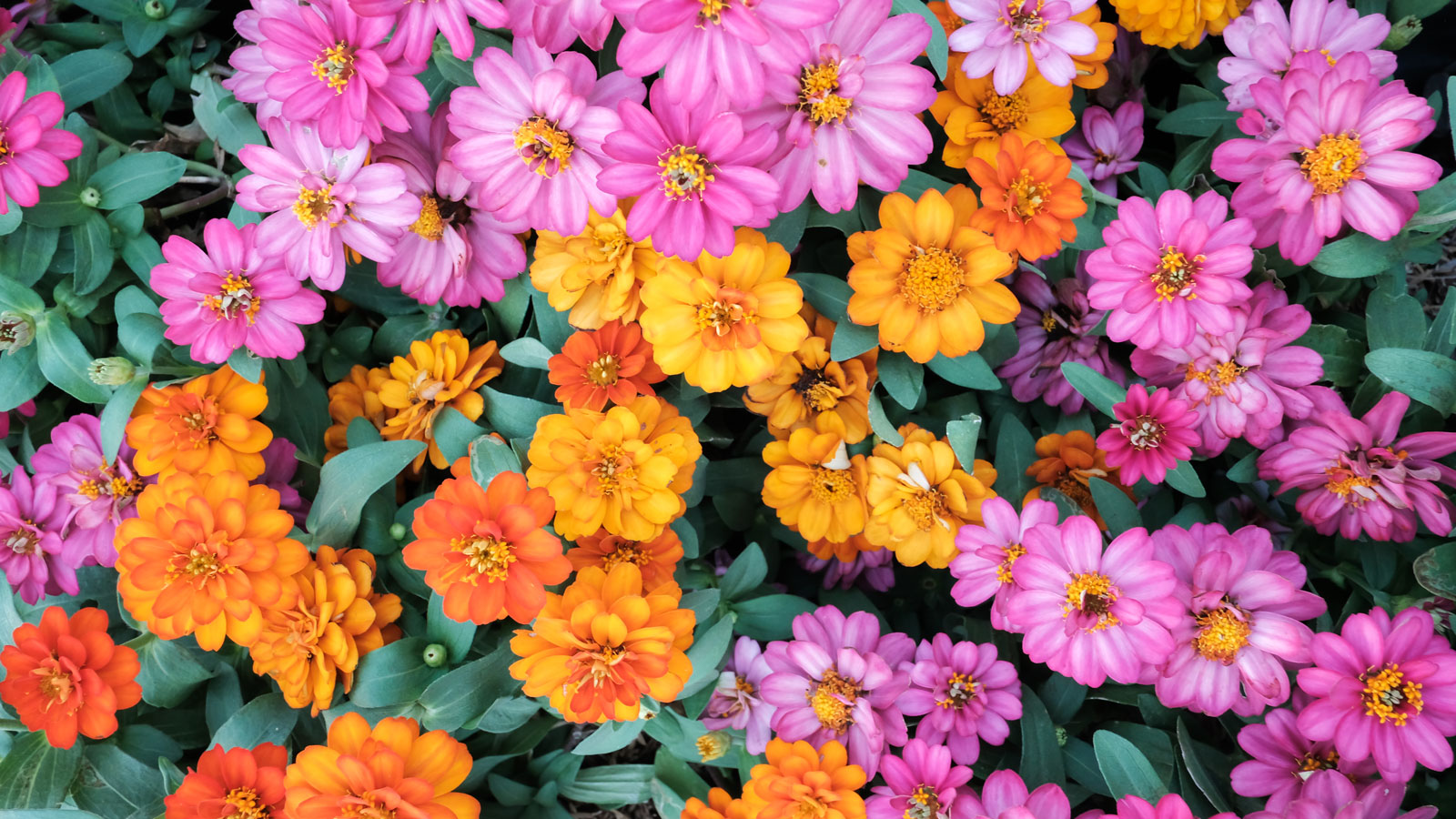
Choosing plants on the basis of color can be a subjective exercise. Out of all the choices that go into plant selection, this is the one you’d think would be the least problematic. But while we often get ‘garden envy’ gazing at other people’s plant arrangements, we can sometimes draw a blank when planning our own plots.
Do we go classic with pastels, calming with whites, or daring with a splash of our favorite color? When gardening with color, we can often stress about rules, harmony, balance and visual integrity. But while we do appreciate color combinations that complement or contrast, there are others that challenge our perceptions – either by creating what our eyes detect as a ‘clash’ or by mischievously throwing up a confusing color accent (like mixing up hot and cold tones unexpectedly).
We all want unique growing spaces with colorful plants that can be the envy of our neighbors. So in the quest for spectacular beds, borders and containers, why play it safe with plants for color? These unexpected plant color combinations can help free your mind and encourage you to play with this vital aspect of gardening. Have fun with unexpected color pairings and unusual plant color combinations.
Choosing Unusual Plant Color Combinations
Plant color combinations usually play on some aspect of balance and counter-balance, based on a ‘color wheel’ of possible ideas. This will deploy primary (red, blue, yellow), secondary (purple, green, orange) and tertiary colors (such as pink and indigo), plus the fundamental neutrals (black, white and gray). With this rudimentary grasp of the color wheel, it is possible to arrange pretty much any combination. And depending on your taste, mood, ambitions and space, this will usually involve mixing complementary or adjacent color combinations.
Visionaries like UK designer Gertrude Jekyll, American color theorist Faber Birren, and Isaac Newton have all inspired landscaping ideas geared towards creating a specific emotional response through color. Using color ‘relationships’ means you can add another dimension to theme gardens such as cottage style – or as the basis for a theme tied to ideas such as color blocking and monochromatic planting. Complementary plantings use colors opposite each other on the color wheel. However, there are other ways of spinning the wheel!
Using clashing schemes, split-complementary schemes and color accents, you can play with adventurous twists on familiar ideas. Unexpected colorful plant combinations present an opportunity to create an element of surprise with your plant choices. Of course, you need to keep the planting fundamentals in mind. Make sure your themed color picks will grow well together, in collaboration or in succession.
Think about your planting region and any specific plant requirements (and whether they will coexist happily with partner plants). The soil will need to be amenable to every plant selected for your color double act (factoring in soil consistency, soil pH, drainage, etc). Also, your plants will need similar cultural requirements relative to light, warmth and shade. Other than that, the only limit is your imagination. So have fun with these unusual plant combinations – be brave, and enjoy!
1. Pink and Gold
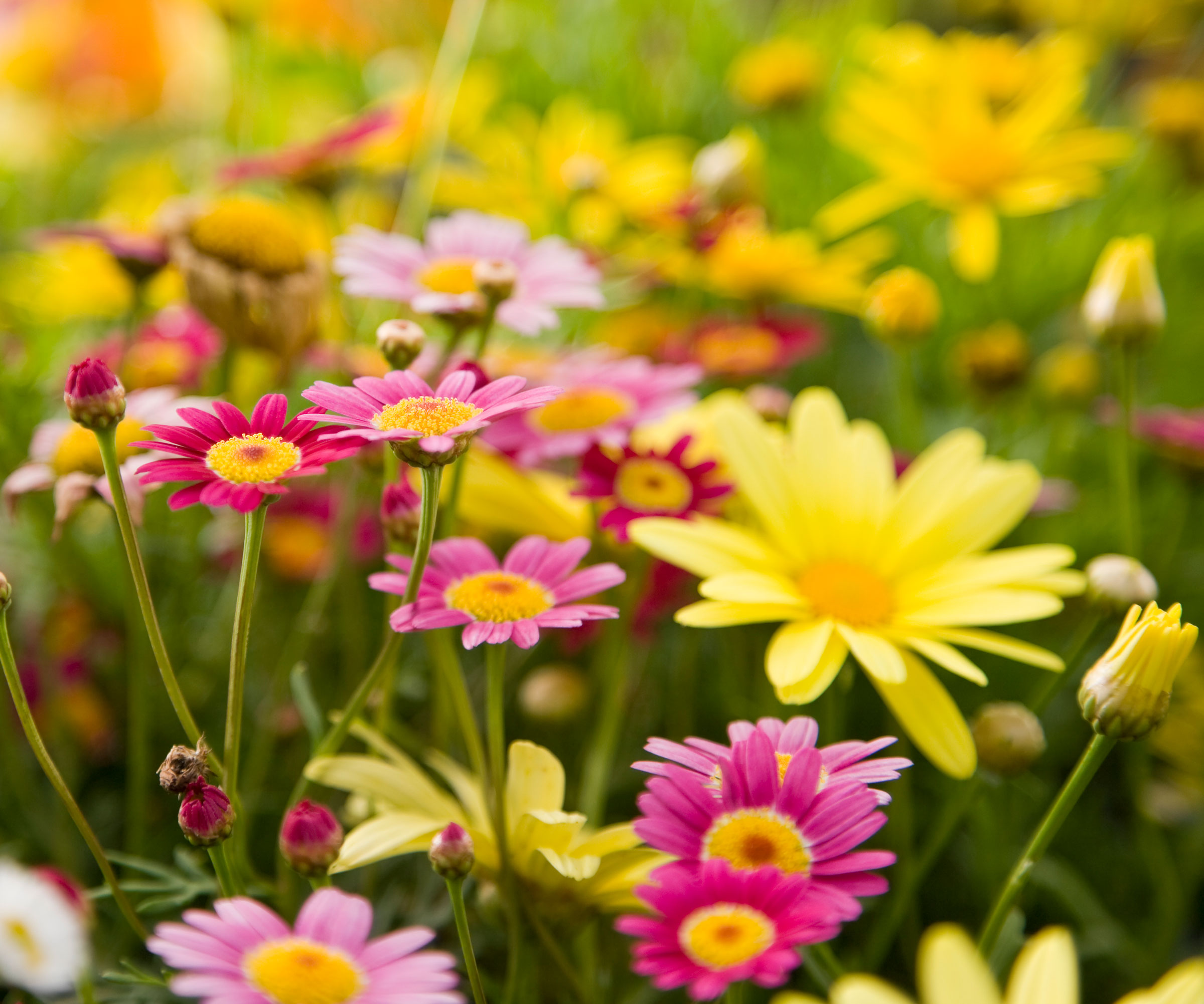
There is something unabashedly giddy about this color pairing. It’s a combo primed for cheer, with delicate shades signifying a romantic streak, whilst more intense shades fizz and collide with bold vitality. Dazzling golds and pinks make for an exciting color wheel ‘clash of the Titans’, featuring two colors that are neither complementary or adjacent.
There are a couple of ways to ramp up the wow factor with this unexpected pairing. First, select one as a ‘pop’ to break up a block of the other color. Second, match up pink flowers and gold with similarly intense saturations for a courageous, vibrant color drenching.
- Pinks: Classic coneflower ‘Magnus’ (Echinacea purpurea), two-tone pink clematis ‘Rosamunde’, bubblegum tinted astrantia ‘Roma’, fluffy sedum ‘Brilliant’ and Joe Pye weed, velvety rose ‘Gertrude Jekyll’, hot pink bleeding heart (dicentra), and multi-pink cosmos ‘Sensation Mix’ from Burpee. Other pink picks with oodles of varieties include mophead hydrangeas (H. macrophylla), dianthus, phlox, peony.
- Golds: Sunshine bright rudbeckia ‘Goldsturm’ and ‘Blackjack Gold’ from the Gardening Know How Shop, pompon dahlia ‘Yellow Jill’, fuzzy coreopsis ‘Golden Sphere’, potentilla ‘Goldfinger’, choisya and acid yellow cushion spurge (euphorbia). There are lots of dazzling sunflowers, like ‘Sunfinity’ and ‘Teddy Bear’ varieties.
2. Blue and Rust
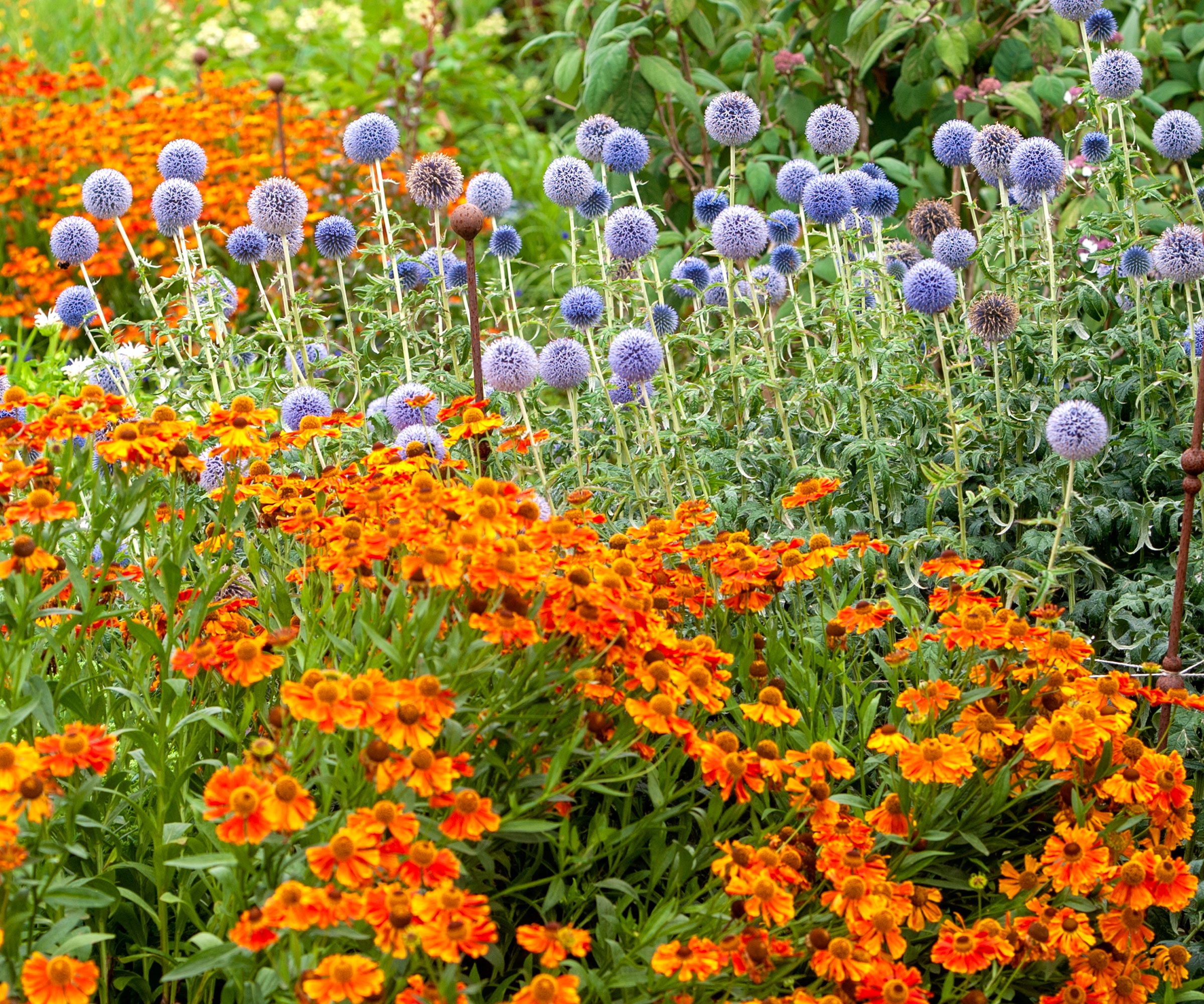
Some might argue that the conventional blue and orange pairing is one of the most widely accepted and popular. However, the partnership of multiple blues with rusts, bronzes, coppers and ambers has one fundamental tension: the combination of a ‘hot’ and ‘cold’ color.
Usually, landscape designers advocate for sticking with one or the other, so the blue/rust dynamic is intrinsically mismatched in the conventional sense. Still, a rust and blue garden pairing is a buoyant duo, especially if you offset periwinkles with rusty chocolates, or ceruleans with gingers.
Sign up for the Gardening Know How newsletter today and receive a free copy of our e-book "How to Grow Delicious Tomatoes".
- Blues: Cool delphinium ‘Lock Ness’, cornflower ‘Blue Boy’, delicate gentian, lobelia ‘Laguna Sky Blue’ from Proven Winners, morning glory ‘Heavenly Blue’, blue grasses, violet agapanthus ‘Brilliant Blue’, love in a mist ‘Moody Blues’ and borage.
- Rusts: Copper kniphofia ‘Tawny King’, neon flecked geum ‘Totally Tangerine’, marbled helenium ‘Sahin’s Early Flowerer’, daylily ‘Rainbow Rhythm’ from Nature Hills, butterfly weed (Asclepias tuberosa). Gorgeous dahlias in this band include ‘Cornel Brons’, ‘Bishop of Oxford’ and ‘Valley Rust Bucket’. For more dazzling rusts and coppers, try calendula and marigolds.
3. Purple and Green
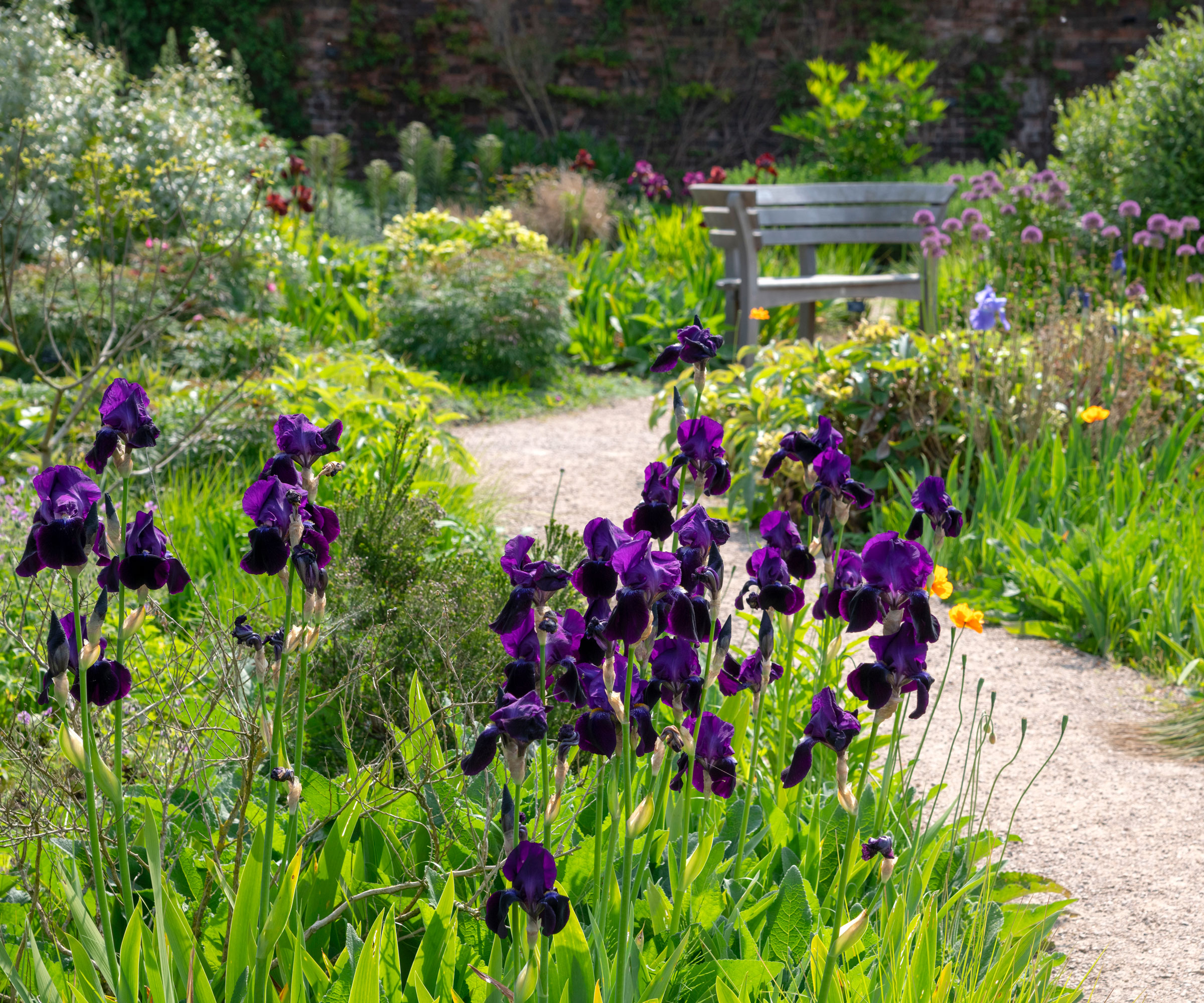
Purple and green is another one of those unexpected visual pairings that seems to juxtapose hot and cold, depending on the tones of purple you tilt towards. Some purples shift more towards the blue end, but then some green flower varieties incorporate a hotter ‘yellow’ element.
This combo is also a ‘clashing’ pair on the color wheel. It’s like an ultra-modern twist on the classic purple and yellow pairing that is often heralded as one of the most accessible. It also presents visual dynamics with any combination of pastel and high saturation.
- Purples: Fluffy mammoth allium ‘Globemaster’, ranunculus ‘Elegance Viola’, Coleus ‘Chocolate Mint’ (which includes lime green), chocolatey purple pittosporum ‘Tom Thumb’, heuchera ‘Grape Soda', plushy viola ‘Huntercombe Purple’. Not forgetting an impressive list of lavenders, including ubiquitous English lavender (L. angustifolia) ‘Munstead’, available at the Gardening Know How Shop.
- Greens: luminescent hellebore ‘Green Marble’, chrysanthemum ‘Feeling Green’, ,zingy zinnia ‘Envy’, evocative pastel green sunflower ‘Sun Fill Green’ from Burpee, statuesque angelica and fragrant nicotiana. For larger flowering options, you can’t go wrong with a panicle hydrangea like ‘Limelight Prime’ from the Gardening Know How Shop.
4. Orange and Silver
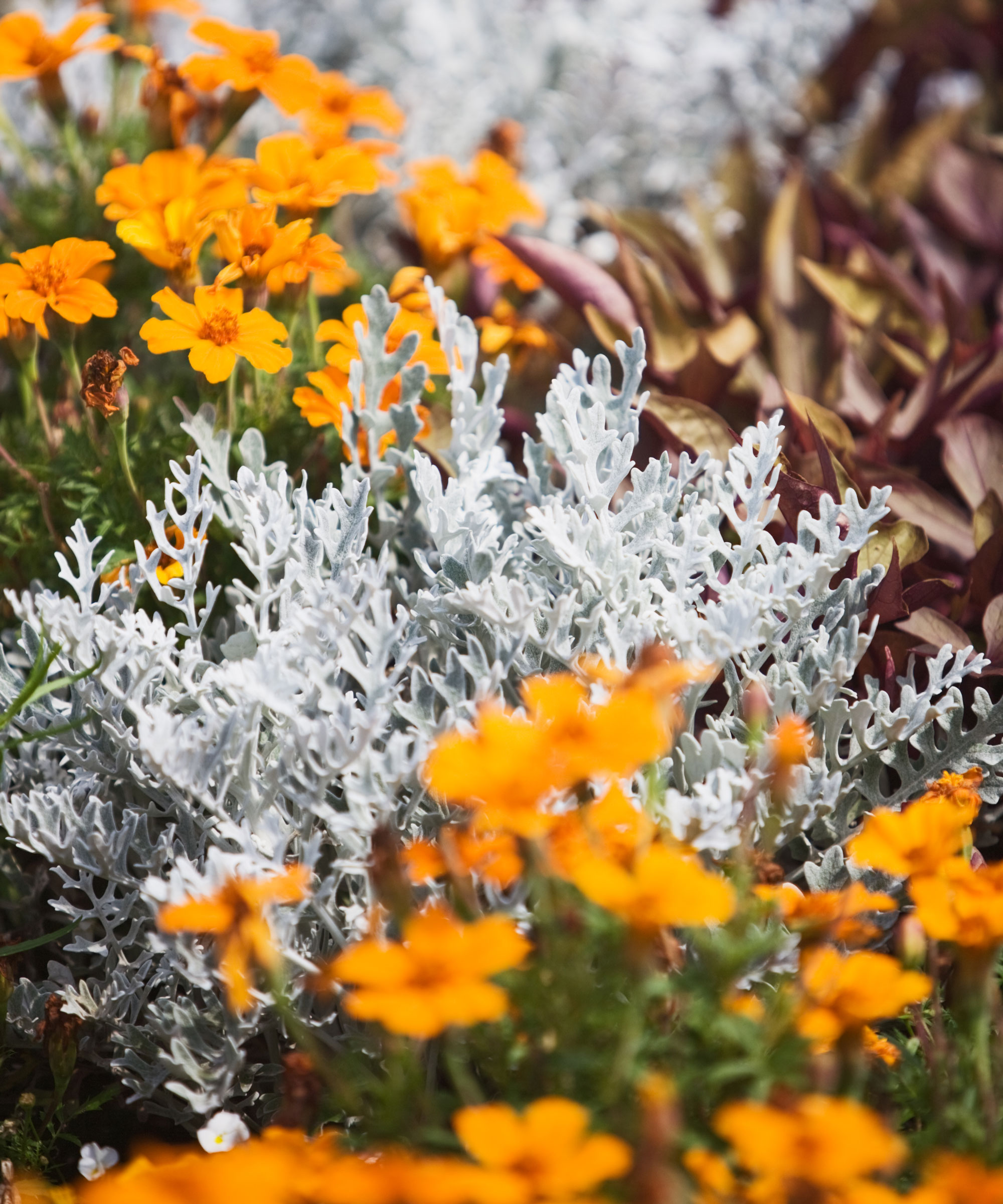
It’s another intriguing fusion of hot and cold that creates one of the most unexpected plant combinations: the silver and orange garden scheme. Cool, crisp and often fuzzy textured silver plants seem to shimmer against the density of such a hot solid as orange, whether it’s a deep rich tone or a more acidic, neon-based orange companion.
Our other unusual plant combinations are two members of the main color wheel. With this pairing, we are mixing a secondary color with a neutral that doesn’t appear on the wheel. For the most enchanting fusions, be sure to mix up foliage textures as well as color clashes.
- Oranges: Californian poppy, begonia ‘Glowing Embers’, vibrant zinnia ‘Benary’s Giant Orange’, dahlia ‘Tangerine Gem’ and ‘David Howard’, vivid nasturtium ‘Baby Orange’ and ‘Orange Troika’, and juicy coneflower ‘Artisan Soft Orange’ which you can buy from Nature Hills.
- Silvers: Salvia nemorosa ‘Silver Carpet’, fuzzy lamb's ears (stachys), spiky artemisia ‘Silver Queen’, generously shaped senecio ‘Angel’s Wings’, bulbous echinops ‘Arctic Glow’, shimmering eucalyptus ‘Azura’, and enigmatic centaurea ‘Silver Swirl’, available to buy from Burpee.
Frequently Asked Questions
Which colors should be avoided in the garden?
Color selection is so much a part of our need to express ourselves, it’s not possible to pronounce certain colors as being off limits. For instance, there was once an aversion to having too many dark plants in a garden. But these days many people love the ‘gothic garden’ look which celebrates black flowers, deep reds, chocolates and violets. What some gardeners might consider depressing or confusing about dark colors, other growers embrace for their sophistication and individuality.
Similarly, we won’t all fancy filling a garden space with just one color, but for some these sorts of themes are a great way to unify a yard – so it would be wrong to be prescriptive. So embrace unexpected color combinations you think will elevate your space, entertain or intrigue the eye, and allow you the chance to express yourself.
What are analogous color pairings in gardening?
Based on the conventional color wheel, analogous color pairings exist next to each other. Although most people are drawn to the stimulating nature of complementary color combinations like purple and yellow or red and green, analogous color pairings offer something different. They can be highly effective and reassuring for gardeners who are after a more reflective or harmonious vibe.
Good examples of analogous color partnerships are red and purple, blue and green, and orange and yellow. One of the most popular analogous color partnerships in modern gardening design is blue and purple, evoking a stylish yet also soothing effect. Mixing and matching blue and purple shrubs, bedding plants, annuals and perennials can make for dazzling displays. Try a combination of aster, cornflower, hardy geranium, lavender, iris, catmint and salvia, and don’t be afraid to include towering blue or purple floral specimens like alliums, agapanthus or globe thistles.
This article features products available from third party vendors on the Gardening Know How Shop. Keep in mind that our plant inventory is limited - so if you’re thinking of purchasing, don’t wait!

Janey is a former assistant editor of the UK’s oldest gardening magazine, Amateur Gardening, where she worked for five years. For the last few years, she has also been writing and editing content for digital gardening brands GardeningEtc and Homes & Gardens. She’s taken part in a range of conservation and rewilding projects for the Royal Horticultural Society (RHS) and the British Trust for Conservation Volunteers (BTCV) as a way of exploring her horticultural horizons. She is currently undertaking her RHS Level 2 certificate in The Principles of Plant Growth and Development.
- Amy DraissDigital Community Manager
